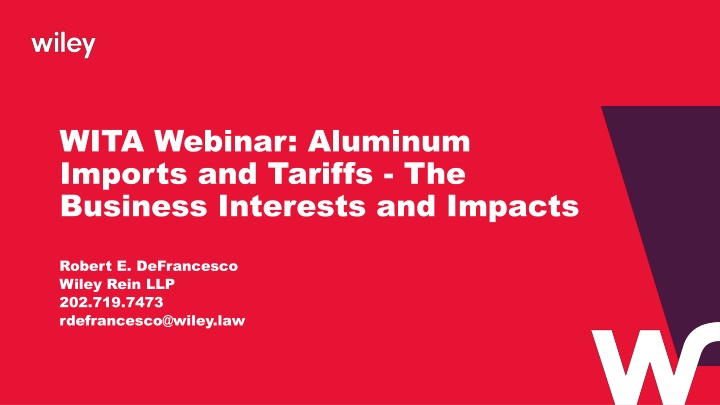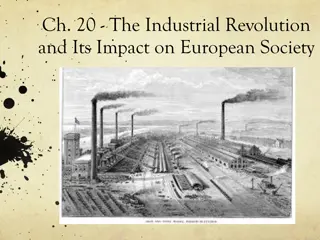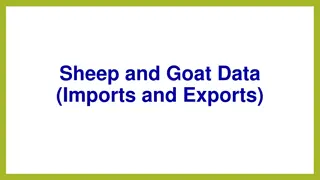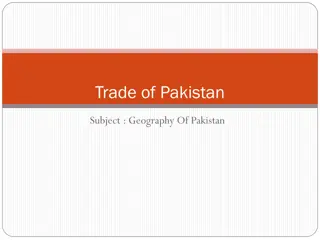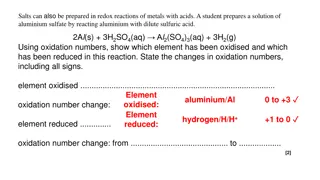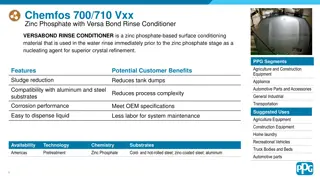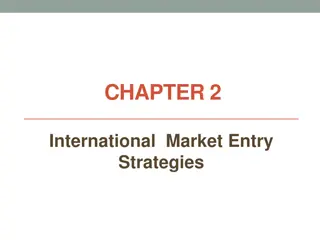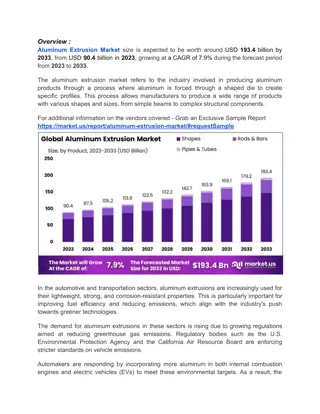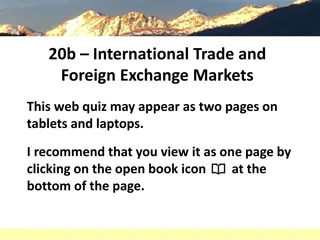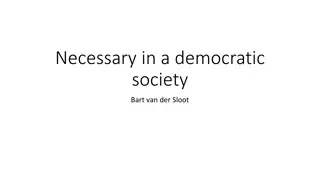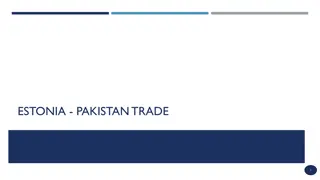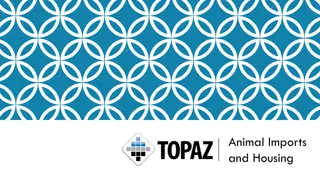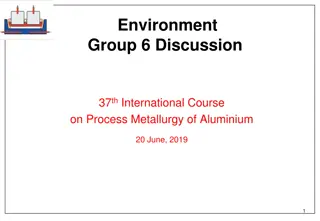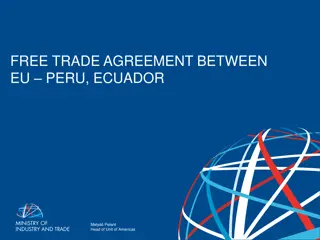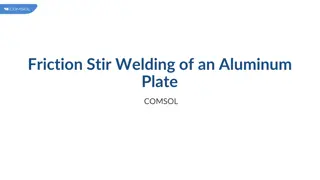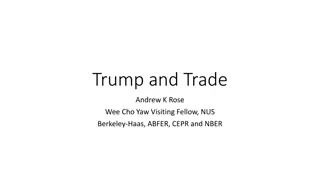Aluminum Imports and Tariffs: Business Interests and Impacts
The Aluminum excess capacity crisis, driven by government intervention and subsidization, poses global challenges impacting various countries. Learn about the implications of Aluminum Section 232 Tariffs and the surge in Canadian primary imports, affecting the U.S. industry. Understand the importance of honoring agreements with allies and the significance of addressing subsidized global capacity issues. Explore the consequences of tariffs on pricing and market dynamics.
Download Presentation

Please find below an Image/Link to download the presentation.
The content on the website is provided AS IS for your information and personal use only. It may not be sold, licensed, or shared on other websites without obtaining consent from the author.If you encounter any issues during the download, it is possible that the publisher has removed the file from their server.
You are allowed to download the files provided on this website for personal or commercial use, subject to the condition that they are used lawfully. All files are the property of their respective owners.
The content on the website is provided AS IS for your information and personal use only. It may not be sold, licensed, or shared on other websites without obtaining consent from the author.
E N D
Presentation Transcript
WITA Webinar: Aluminum Imports and Tariffs - The Business Interests and Impacts Robert E. DeFrancesco Wiley Rein LLP 202.719.7473 rdefrancesco@wiley.law
The Aluminum excess capacity crisis is a global problem driven by pervasive government intervention and subsidization February 19, 2025 PRIVILEGED and CONFIDENTIAL and/or ATTORNEY WORK PRODUCT 2
The OECD illustrates that subsidizing countries expanded capacity at the expense of non-subsidizing countries February 19, 2025 3
The Aluminum Section 232 Tariffs Are Intended to Offset the Negative Effects of the Subsidy Driven Capacity Crisis As a globally traded commodity product, the cumulative affects of the subsidized global excess capacity is efficiently transmitted to the U.S. industry in the form of depressed pricing. As a commodity, the imports, regardless of source then transmit those affects when the enter the United States. Therefore targeting relief to only a few bad actors is akin to providing no relief at all. February 19, 2025 PRIVILEGED and CONFIDENTIAL and/or ATTORNEY WORK PRODUCT 4
The 300% surge in unalloyed Canadian primary caused a 57% collapse in the MWP and injured the U.S. industry February 19, 2025 PRIVILEGED and CONFIDENTIAL and/or ATTORNEY WORK PRODUCT 5
True allies Respect Agreements Regardless of whether Canada was an ally or not, their surge was undermining the Aluminum 232 program. Regardless of which time period was considered, the surge was meaningful and well above historic norms; and In the current demand environment, the surge captured an increasingly greater share of the market crowding out U.S. production and other imports making the surge even more injurious The Administration attempted to negotiate a solution, but the Canadian Government was recalcitrant and insisted it was not surging volume. The agreement expressly considered imports at the six digit HTS category and contemplated measuring surges at that level. By any measure Canadian imports under 7601.10 surge significantly collapsing the MWP and resulting in shutdowns and layoffs at U.S. smelters. February 19, 2025 6
The re-imposition of the tariffs is having the intended affects Since the anticipated imposition of the tariffs, pricing in the U.S. market has stabilized and U.S. producers are back on more solid footing. Independent third-party analyst recognize that U.S. producers have returned to profitability and that even the recently idled Intalco facility should be viable. Moreover, independent third-parties have recognized that the biggest winner is the U.S. downstream industry. The re-imposition of the 10% Tariff on Canadian imports caused the spread between the MW premium and scrap prices to widened. Analysts believe that the relative spread between the MW premium and scrap prices significantly influence U.S. producers profitability. This is born out in the recent Common Alloy Sheetcase, were the domestic industry s profitability increased while the tariffs were in place despite a 117% increase in subject import volume over the period. February 19, 2025 PRIVILEGED and CONFIDENTIAL and/or ATTORNEY WORK PRODUCT 7
The Aluminum Associations 18-country common alloy sheet case is a recognition that for relief to be effective it must be broad The Common alloy sheet case covers 18 countries including some allies like: Germany, Italy Spain, Korea, and Brazil. Petitioner (the Aluminum Association) stated explicitly that: {A}s imports from China began to recede from the U.S. market the domestic CAAS industry was hit with a second wave of unfairly-traded imports that was even worse than China. The new import wave was from not one country alone, but from multiple countries - 18 in total - and those imports captured a far larger share of the U.S. market than imports from China had ever attained. Petitioner Post-Conference Brief, at 32. This case is interesting in that while subject imports increased by over 100% and have taken market share, the domestic industry s production and profits all increased while the Section 232 tariffs were in place. In addition, the respondents have argued that much of the import surge was due to the domestic industry s own requests for exemptions from the Section 232 tariffs, arguing that the domestic industry cannot be injured by its own imports. CVD Preliminary Determinations: Bahrain 9.49%, Brazil 1.32-0.76%, India 34.84-4.55%, and Turkey 3.15% AD Preliminary Determinations: October 6, 2020 Final determinations are scheduled for late December (unless postponed). February 19, 2025 8
Questions? February 19, 2025 PRIVILEGED and CONFIDENTIAL and/or ATTORNEY WORK PRODUCT 9
